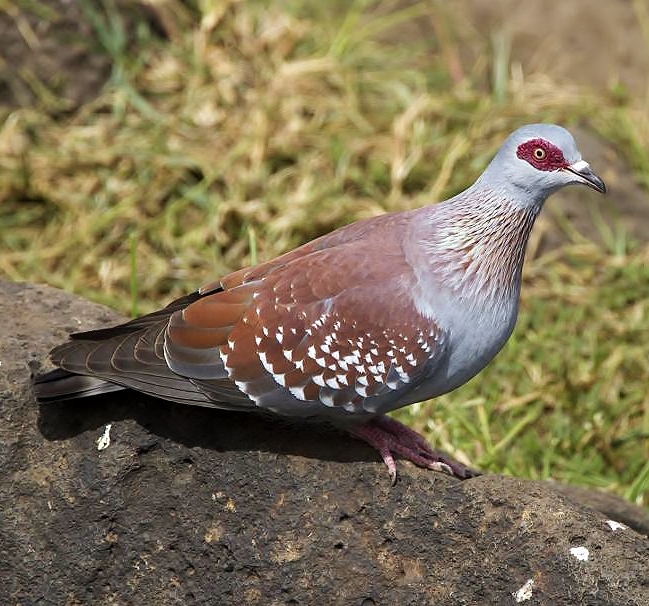 |
| Photo by Marco Valentini (Internet Bird Collection) |
Common name:
speckled pigeon (en); pombo-da-Guiné (pt); pigeon roussard (fr); paloma de Guinea (es); Guineataube (de)
Taxonomy:
Order Columbiformes
Family Columbidae
Range:
This species occurs in sub-Saharan Africa, with two disjunct populations. The more northern population is found from Senegal and guinea east to southern Sudan and Ethiopia, and through Kenya, Uganda and eastern D.R. Congo into Tanzania. The more southern population is found from southern Angola and Zimbabwe down to South Africa.
Size:
These birds are 32-41 cm long and weigh 250-350 g.
Habitat:
The speckled pigeon is mostly found in dry savannas, but also in rocky mountainous areas, dry scrublands and grasslands, hot deserts, agricultural areas and also within urban areas. This species is present from sea level up to an altitude of 3.000 m.
Diet:
They feed mainly on seeds, namely from wild grasses and cultivated crops such as sunflower, wheat, sorghum, maize and ground nuts. They are also known to eat fruits, flowers, leaves and acorns.
Breeding:
Speckles pigeons can breed all year round, mostly late in the local dry season. They can nest singly or in colonies, the nests consisting of a loose cup or platform of twigs lined with grasses, herbs and sometimes wire and other human refuse. The nest can be placed on ledges of cliffs, in caves, gullies, trees, or often in buildings. The female lays 1-3 white eggs which are incubated by both parents for 14-18 days. The chicks are fed by both parents, initially only crop milk but later also small pieces of food. They fledge 20-37 days after hatching.
Conservation:
IUCN status – LC (Least Concern)
This species has an extremely large breeding range and is described as common in most of this range. The population is suspected to be stable in the absence of evidence for any declines or substantial threats and they are known to adapt very well to living with humans as they often nests and roosts in buildings.







